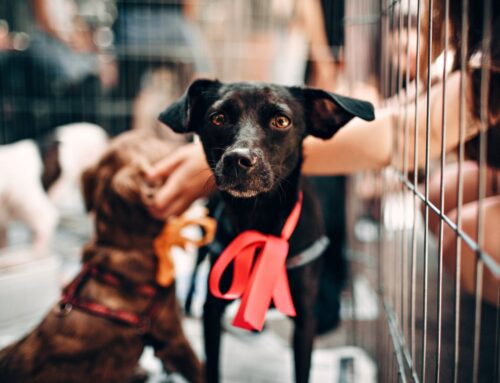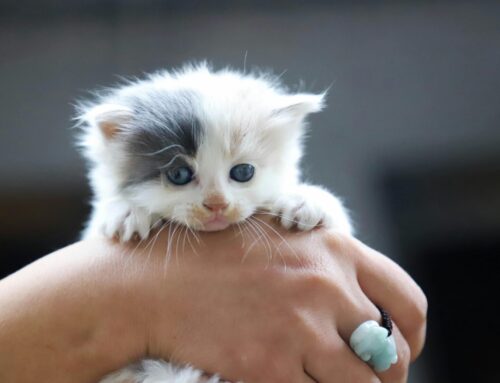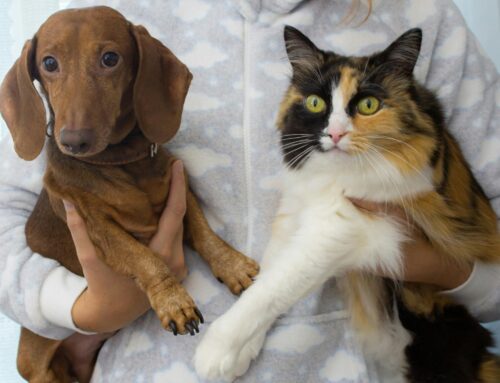Pet overpopulation is one of the most pressing animal welfare crises in the United States and worldwide. Every year, shelters take in millions of dogs and cats, yet they euthanize hundreds of thousands simply because there aren’t enough homes for them.
Despite this crisis, breeders continue producing more puppies and kittens to meet consumer demand. While many people believe they are making a responsible choice by buying from a “reputable” breeder, the harsh truth is that any purchase from a breeder contributes to the pet overpopulation crisis.
How Bad Is the Pet Overpopulation Problem?
To fully grasp the severity of the issue, consider these numbers:
-
6.3 million companion animals enter shelters each year in the U.S. The American Society for the Prevention of Cruelty to Animals (ASPCA), reports that approximately 6.3 million companion animals enter U.S. animal shelters annually.
-
3.1 million are dogs, and 3.2 million are cats. The ASPCA specifies that of the 6.3 million animals entering shelters, about 3.1 million are dogs and 3.2 million are cats.
-
920,000 shelter pets are euthanized annually—58% of them cats. According to the ASPCA, approximately 920,000 shelter animals are euthanized each year, comprising 390,000 dogs and 530,000 cats.
-
Over 25% of dogs in shelters are purebreds, proving that even breed preferences can often be met through adoption. The Humane Society of the United States notes that approximately 25% of dogs in shelters are purebred, supporting the assertion that breed preferences can often be accommodated through adoption.
Meanwhile, puppy mills and backyard breeders mass-produce animals to meet consumer demand. If people stopped buying from breeders, shelter intake would decrease, euthanasia rates would plummet, and fewer animals would suffer neglect and abandonment.
Supply and Demand: How Buying from Breeders Fuels Overpopulation
Basic economics tells us that markets follow demand. When people buy from breeders, they signal that there is a demand for more animals, so breeders continue producing them.
The “Fast Fashion” Analogy
Fast fashion retailers like Shein and Zara produce massive amounts of clothing every year, and much of it ends up in landfills. Why? Because people keep buying new clothes instead of wearing what already exists.
The same principle applies to pet overpopulation. Millions of pets already exist in shelters, yet people want something “new,” so breeders keep supplying fresh litters—even as shelter pets die due to lack of demand.
Are Breeders Really to Blame? Absolutely.
Some people argue that breeders are not responsible for pet overpopulation, blaming irresponsible pet owners instead. While irresponsible pet ownership is a factor, breeders perpetuate the cycle by increasing supply when there is already an overabundance of homeless animals.
1. Every Breeder Puppy Means One Less Shelter Pet Adopted
Each time someone purchases a dog from a breeder, they take a potential home away from a shelter pet. If breeders weren’t flooding the market with puppies, more people would turn to adoption, and shelter euthanasia rates would decline dramatically.
2. No Breeder Can Guarantee a Pet’s Lifetime Home
Even if a breeder carefully screens potential buyers, life happens. People move, develop allergies, have financial hardships, or realize they can’t handle a dog’s needs. Many pets purchased from breeders still end up in shelters.
3. Breeders Often Prioritize Profits Over Animal Welfare
Even so-called “responsible” breeders profit from selling animals rather than helping homeless pets. If they truly cared about reducing overpopulation, they would stop breeding and support adoption instead.
The Harsh Reality of Overcrowded Shelters
What Happens to Shelter Pets When They Aren’t Adopted?
When shelters are overcrowded and adoptions slow, the consequences are dire:
•Euthanasia: Many shelters have no choice but to euthanize animals to make space for incoming strays.
•Disease outbreaks: Overcrowding increases stress and weakens immune systems, making illness rampant.
•Emotional distress: Dogs and cats often experience severe anxiety and depression in shelters, making them harder to adopt.
Meanwhile, breeders continue producing more animals, worsening the crisis.
The “Food Waste” Analogy
Imagine grocery stores throwing away tons of perfectly good food while farmers keep producing more. That’s exactly what’s happening in the pet world—shelters are euthanizing animals while breeders keep adding to the surplus.
The Truth About “Hypoallergenic” and “Designer” Breeds
One major reason people buy from breeders is the belief that they need a specific breed, especially for allergies. However, this is a myth.
•No dog is truly hypoallergenic. Even Poodles and other so-called hypoallergenic breeds still produce dander.
•Many shelter dogs are low-shedding, including mixed breeds that have inherited allergy-friendly traits.
Similarly, “designer” breeds like Goldendoodles and Cavapoos are often nothing more than expensive mixed breeds, many of whom end up in shelters once their owners realize they require extensive grooming and exercise.
Why Puppy Mills Thrive Because of Consumer Demand
•99% of pet store puppies come from puppy mills.
•Over 2 million puppies are bred in mills each year, while 1.2 million dogs are euthanized in shelters.
•Puppy mills often breed dogs who suffer from untreated medical conditions, endure severe neglect, and are discarded when they can no longer produce puppies.
Every purchase from a breeder, even a “responsible” one, keeps this industry alive.
How to End Pet Overpopulation
1. Adopt, Don’t Shop
The best way to stop the cycle of overbreeding is to choose adoption. There are millions of shelter animals waiting for homes, including purebreds, puppies, and hypoallergenic breeds.
2. Spay and Neuter Pets
One unaltered dog and her offspring can produce over 67,000 puppies in six years. Spaying and neutering prevent accidental litters, reducing shelter intake.
3. Educate Others About the Breeder Crisis
Many people still don’t understand how buying from breeders fuels overpopulation. Spreading awareness helps change minds and saves lives.
4. Support Laws That Regulate Breeders and Ban Puppy Mills
Several states have enacted laws to restrict commercial breeding, but lawmakers need to implement stronger regulations. Advocating for tougher laws can help reduce the supply of breeder animals.
The “Foster Care vs. Designer Baby” Analogy
Adopting a shelter pet is like adopting a child from foster care—it’s about giving a life a second chance.
Buying from a breeder, on the other hand, is like commissioning a designer baby while thousands of children wait in foster care.
The ethical choice is clear: adopt, don’t shop.
Final Thoughts
Pet overpopulation is not just an unfortunate reality—it’s a direct consequence of consumer demand. As long as people buy from breeders, they will continue producing more animals, while shelters remain overcrowded and euthanasia persists.
If we truly care about animal welfare, we must stop supporting breeders and choose adoption instead.
Every breeder sale doesn’t just place a pet in a home—it leaves another shelter animal behind, waiting for a chance that may never come.
When we make compassionate choices, we break the cycle, reduce suffering, and create a world where no pet is left behind.




